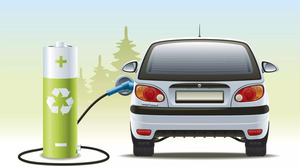India’s market for luxury electric vehicles (EVs) is hotting up, with the likes of Mercedes-Benz and Audi lining up a slew of launches and state governments making a beeline to support Tesla’s entry into the country.
While Tesla is still undecided about the India entry, as the Model S manufacturer hasn’t got any assurance on its demand for a cut in import tax on fully built vehicles, other luxury automakers already present here are banking on the lower GST on EVs and local assembling to push their vehicles. The tax breaks allow them to sell some of the electric vehicles at prices on par with their fossil fuel-powered variants.
Audi has kicked off a study to check the feasibility of local assembly of EVs, while Swedish rival Volvo Cars is also exploring the same strategy. BMW, meanwhile, is seeking a duty cut on fully built imported vehicles, just like Tesla, but “for a limited period” as it is also considering localisation.
A GST rate of just 5% for electric vehicles – it is as high as 50%, including cess, for premium diesel or petrol-powered passenger vehicles – is a key enticement for automakers.
Also, the basic customs duty on completely knocked down (CKD) kits, which are then assembled locally, is around 40% for petrol, diesel or even electric cars. For completely built units (CBU) imported from foreign plants, it is 66-110% depending on the car’s value.
Both combined, a locally assembled EV enjoys 26-70% benefits on cost compared with an imported CBU of the same model.
Expenses vs Incentives
On top of this, several states have scrapped road tax on EVs, which is also encouraging luxury car makers to bring in more models.
However, experts say that while the perceived benefits are high, the actual would be much lower, at 20-30%, after accounting for the expenses to set up a local assembly line, as well as cost towards other infrastructure and workers. This is one of the reasons Tesla is seeking to import CBUs to test the market first.
“The current GST benefits allow electric cars to be priced competitively closer to ICE (internal combustion engine). However, it applies to both CBU and CKD vehicles,” said Martin Schwenk, managing director at Mercedes-Benz India.
But the differentiator is localisation. “Localisation has its distinct benefits as compared to importing via CBU route,” Schwenk said. “For EVs, just like our other high-end ICE vehicles, we see a business case for localisation as soon as we have sufficient sales volume.”
Market Action
Already eight luxury electric vehicles have hit the road from Mercedes-Benz, Audi and Jaguar Land Rover. Another dozen models are being explored to be introduced in India.
Globally, Mercedes-Benz has six electric vehicles, and some of them are likely to make their way into India. Audi already has five EVs in India, while BMW India plans to have a portfolio of three EVs here in the next 12-18 months.
Mercedes-Benz and Audi have seen strong traction for the EVs with the allotted volumes for the country getting exhausted within weeks or months of their launch.
With plans of launching an all-new EV every year for the coming five years, Volvo Auto India expects 80% of its total sales to come from EVs. Hence, it is imperative for the Swedish carmaker to look at local manufacturing. While Volvo has announced plans to go full electric by 2030 globally, it can happen much faster in India, said Jyoti Malhotra, managing director of Volvo Cars India.
Source: eqmagpro.com









